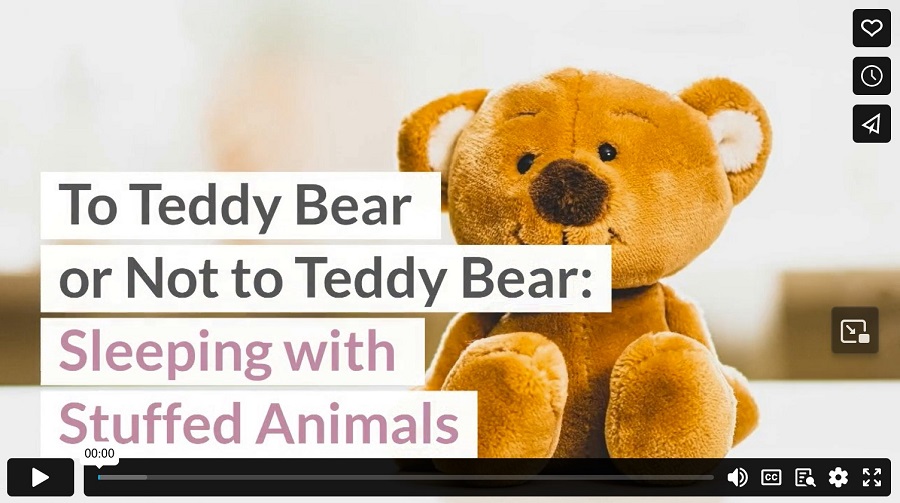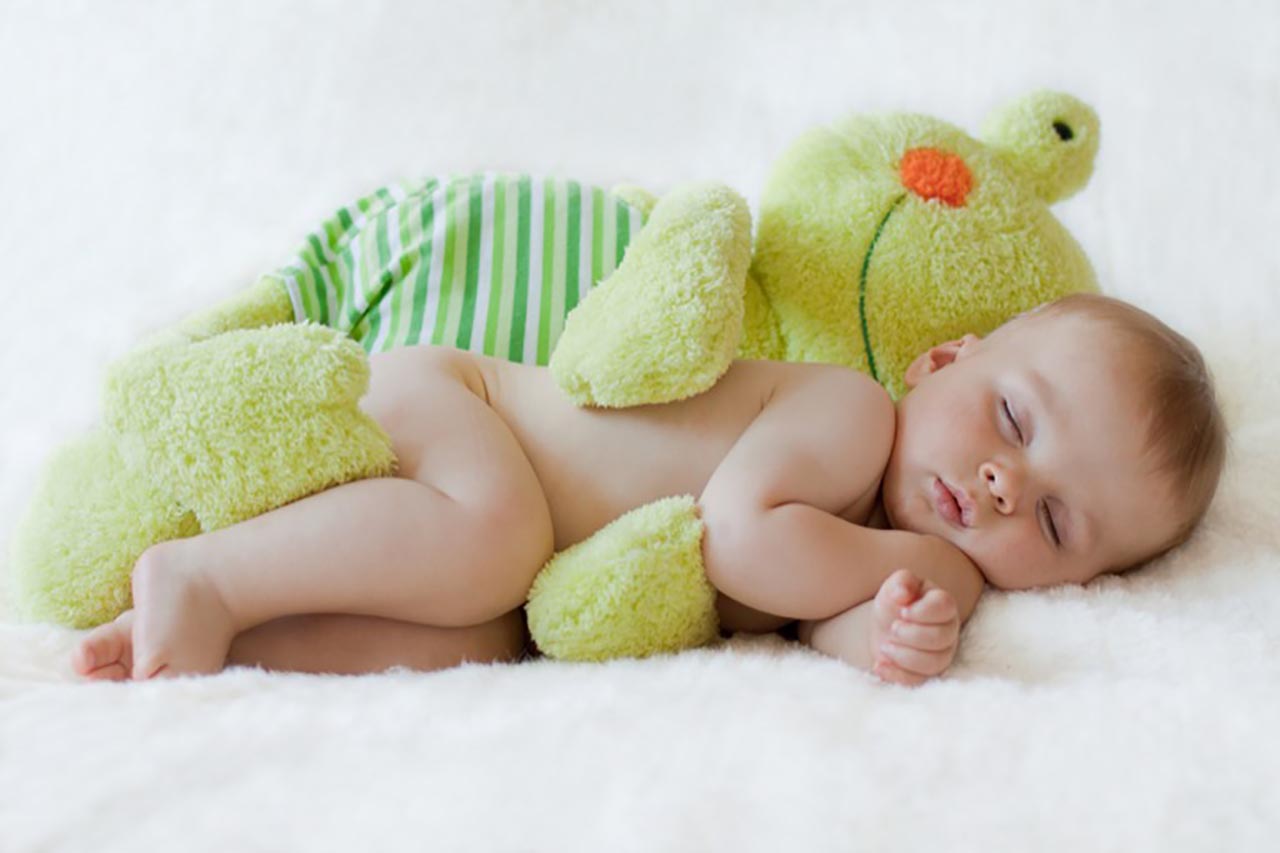That worn out, sucked on, partially balding teddy bear that your child loves may go with them everywhere, but should it go with them to bed?
You may wonder about the safety of having a stuffed object in your child’s crib.
You may also be concerned about healthy boundaries. After all, you don’t want them to get so attached to this little bundle of fluff and fur that if they happen to lose it, they recreate the melting scene from the “Wizard of Oz.”
And if you’re prone to thinking into the future, you may have worries about your child heading off to college still needing Teddy to soothe them to sleep. (What would the roommates say?)
Here are some general guidelines to help you gauge when it is and isn’t OK to let Teddy into the crib or bed. Make sure you pair these with the fine art of paying attention. Every little one is different, and your careful observation, paired with your parental intuition, can help you know what’s best for incorporating stuffed toys into the daily/nightly routine.
Newborn to One Year
This is the stage where less is more. The American Academy of Pediatrics recommends keeping all soft objects, including stuffed animals, blankets, and crib bumpers, out of the area where your baby sleeps until they are at least 12 months old. These soft objects have been associated with suffocation, strangulation, and SIDS (sudden infant death syndrome).
Soft objects are especially dangerous for babies between 5 and 11 months. Their increased mobility allows them to move around and get tangled up with soft items–but not necessarily to untangle themselves. So clear the crib and save Teddy for later. Right now, the world around them is stimulating enough. Safety first.
Some parents like mobiles at this stage. They are out of reach but can provide calming entertainment. This is where that one rule comes into play: pay attention. If you’d like to try a mobile, go for it. Then, perhaps take it away and see what happens. It might be too distracting, or it might be a lovely way to help your child drift off to sleep. Just be careful not to create a crutch out of a mobile. The last thing you want is to have to drag around that exact unicorn mobile EVERYWHERE you go because your child won’t sleep through the night without it.
Twelve to Twenty-Four Months
Imaginations are starting to really fire up now! Children might set up shop, put on a show, or have a party with stuffed friends in their crib or bed. Once again, see rule number one: pay attention. Imaginary play can be wonderful and a great way to encourage sleep. It can also be over stimulating and prevent your child from drifting off to sleep.
Be sure to carefully inspect all stuffed animals before you let them into the crib. Make sure they don’t have any buttons or plastic bits that could come off and turn into choking hazards.
It’s also a good idea to swap out animals and see what happens. This keeps baby from getting too attached to one stuffed toy. You can turn it into a game and have fun with the process. Teddy may be the designated friend for this week, but Bunny can take over next week for an exciting surprise.
Again, the ideal is to avoid a sleeping crutch and help your child get used to falling asleep in lots of scenarios with lots of snuggling buddies. Just to be clear, we are NOT suggesting that this is a habit you’ll want to perpetuate into adulthood, but it can be a valuable tool for baby sleep help.
Toddlers and Beyond
Paying attention is important in this phase, too, and luckily it can get a little easier! Your toddler might be starting to babble a bit and give more information to communicate their needs. Keeping variety in the toys can help avoid the crutch trap.
You might notice different sleep needs between naptime and nighttime. Your child might be worn out enough in the evenings that they don’t need any stuffed animal friends, but they help make naptime better for everyone. As they outgrow napping, the stuffed animal play can still serve as a needed quiet time break for your child and for you.
What if they’re too attached?
Like thumb sucking, stuffed animal attachments can give parents fear about their child’s future. What if they’re dragging Teddy to summer camp as a teen? Or to their college dorm room? Isn’t this bad?
Most child psychologists say don’t sweat it. They classify stuffed animals as “transitional objects” and say that they aren’t harmful and can even help youth develop healthy attachments. If your child loves their stuffed friend, they’re in good company. The International Journal of Behavioral Development says that 60 to 70% of kids in the U.S. and United Kingdom soothe themselves with transitional objects.
The attachment to these objects usually peaks around age 3 or 4. Trying to “mix it up” with several stuffed animals so that your child doesn’t hyperfocus on one is a good strategy.
If your child’s attachment seems to be lingering too long, you can also try a weaning process where the child can have their stuffed toy for certain hours of the day but not others (and maybe even every other night). If a child’s attachment seems especially strong or is continuing into the teen years, you may want to talk to your doctor to make sure that there aren’t other contributing emotional factors.
The Most Important Rule
We were all very good parents before we had children. It’s easy to have a list of rules and ideals when we are not trying to get a child to stay in bed for the 10th time or soothing them back to sleep at 1 a.m.
If your little one sleeps better with a stuffed toy, most experts say to go with it. Just pay close attention to make sure the toy isn’t posing a health risk, overstimulating your child, or turning into an unhealthy attachment as your child grows.
Video



